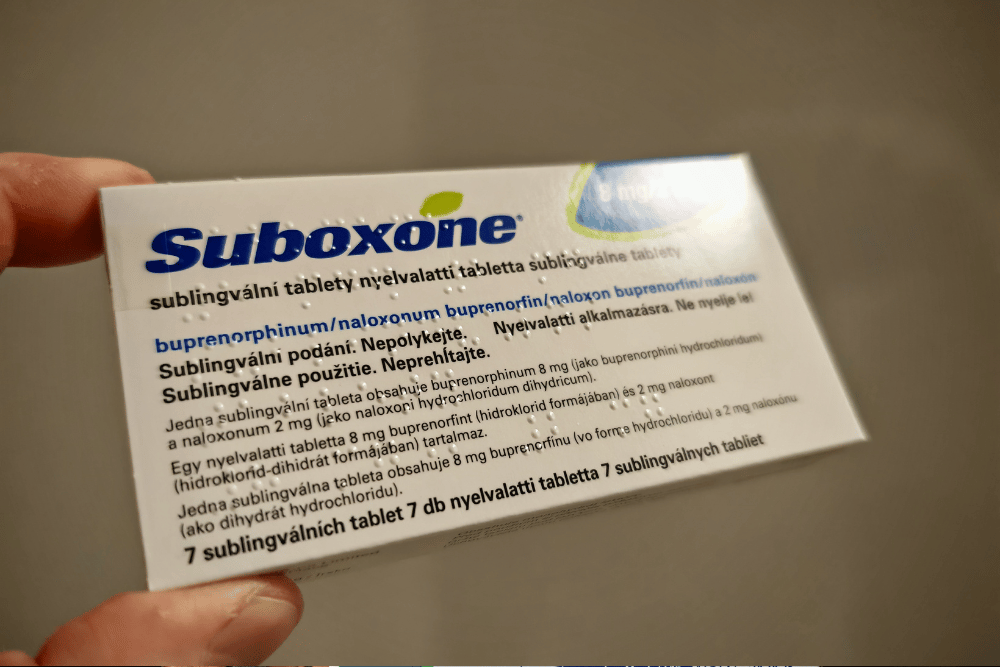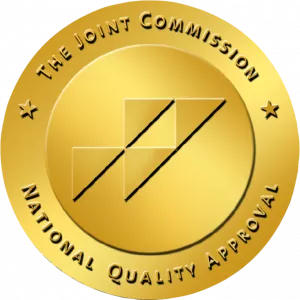Key Takeaways
|
Many people wonder whether you can take tramadol with Suboxone. In this article, Avenues Recovery, leaders in addiction rehabilitation, will discuss whether this combination is safe, the effects of mixing tramadol and Suboxone, and alternative ways to manage pain.
What Are Tramadol and Suboxone?
Extreme caution must be taken when using Suboxone and tramadol together, as mixing them in an unsafe manner can be very dangerous.
Suboxone
Suboxone is also known as buprenorphine naloxone as it is a combination of buprenorphine and naloxone that helps people manage withdrawal symptoms from opioid substances. Buprenorphine is a partial opioid agonist, while naloxone is an opioid antagonist. Buprenorphine acts as an opioid agonist at the mu-opioid receptor, but only partially activates it. Partial opioid agonists like buprenorphine differ from full opioid agonists, which fully activate opioid receptors and have a higher risk of addiction. The benefit of Suboxone is that although it does cause euphoria, it has a ceiling effect. At some point, increasing the dose does not increase the euphoric ‘high’.

Tramadol
Tramadol is an opioid drug prescribed as a painkiller for severe pain after surgery or serious injury. Tramadol is classified as a weak opioid. Tramadol and other opioid agonists are used for pain management, but their mechanisms and risks differ. Like other opioid substances, tramadol is addictive. Tramadol was classified as a Schedule IV controlled substance by the FDA due to its potential for misuse. For this reason, patients will have to decrease the dose gradually with medical supervision when they no longer need to take the medication. Some of the side effects of tramadol include:
- Drowsiness
- Dizziness
- Constipation
- Vomiting
- Difficulty concentrating
- Sweating
- Anxiety
- Vision issues
Does Suboxone Block Tramadol?
Yes, Suboxone blocks tramadol. The naloxone present in Suboxone reverses the after-effects of opioids like tramadol, while the buprenorphine replaces the opioid from the receptors in the brain. Naloxone can also 'knock tramadol off’ the opioid receptors, which may lead to withdrawal symptoms if tramadol was taken first. This means that the euphoric ‘high’ that results from using tramadol will not be felt if Suboxone is used afterwards.
Can You Take Tramadol With Suboxone?
Yes, you can take tramadol with Suboxone, as long as you take Suboxone and tramadol in that order—first Suboxone, and only then tramadol. A doctor may prescribe tramadol to be taken after Suboxone to manage symptoms of pain, but tramadol should only be used with Suboxone if a doctor prescribes it and closely monitors the patient. It is recommended to maintain the current Suboxone dose and add tramadol or other medications if necessary for severe pain. Mixing tramadol with Suboxone can increase the risk of drug interactions and may result in an additive analgesic effect, which can enhance pain relief but also increase the risk of adverse effects.

Can you take tramadol and then Suboxone?
No, that would cause very unpleasant and even, in some cases, dangerous effects.
If you take tramadol first and then Suboxone, you risk experiencing precipitated withdrawal symptoms, also known as POW (precipitated opioid withdrawal), where the typical withdrawal symptoms are more intense and severe than acute withdrawal. Patients may experience precipitated withdrawal symptoms if they do not wait the recommended time before starting Suboxone after tramadol. Suboxone should ideally be taken at least 24 hours after tramadol. It is important to have medical supervision when starting Suboxone to avoid these risks and ensure proper timing.
Some of the POW effects include:
- Nausea and vomiting
- Sweating
- Diarrhea
- Increased blood pressure and heartbeat
- Cramping and muscle aches
- Trouble sleeping
- Depression
- Suicidal ideation
Combining more than one medication for pain relief should only be done under medical supervision due to the risk of severe drug interactions. Always consult your healthcare provider before mixing tramadol with Suboxone or any other medications.

What Are the Side Effects of Taking Tramadol and Suboxone Together?
As mentioned, using tramadol first and then Suboxone will cause the effects of tramadol to be diminished completely. Additionally, there can be severe, unpleasant effects such as precipitated withdrawal. There are other risks involved in using the two drugs together (even if they are taken in the correct order). This is because both Suboxone and tramadol are opioids, so if one increases the recommended dose of one or both substances, they increase the risk of overdose. Combining tramadol and buprenorphine can further complicate treating pain, especially in patients with substance use disorder, due to the potential for additive effects and increased risk of adverse outcomes.
The two drugs interact differently for different people but can potentially cause seizures, sedation, and respiratory depression, among other adverse symptoms. In general, be careful when using Suboxone and tramadol to ensure that you do not exceed the recommended dose or take the two substances in the wrong order. Combining Suboxone with other drugs, including other opioid medications and opioid pain medications, can increase the risk of dangerous interactions and side effects. Medication-assisted treatment, such as Suboxone, is designed to help those with substance use disorders manage withdrawal and reduce misuse, making it important to avoid other opioid medications and seek alternative pain management options when possible.


It is essential to consult a healthcare provider before using tramadol, Suboxone, or any other drugs to treat pain, especially for those with a history of substance use disorder, to ensure safe and effective care.
What Are the Dangers of Misusing Tramadol?
As mentioned above, tramadol is a Schedule IV controlled substance often used to treat moderate to severe pain, but misusing tramadol—especially alongside Suboxone—can have serious, even life-threatening consequences.
Respiratory Depression
A major risk is respiratory depression, which can occur if tramadol is taken in high doses or misused in an attempt to overcome the blocking effects of Suboxone. Respiratory depression is a serious condition where breathing becomes dangerously slow or shallow, and it can be fatal if not treated promptly.

Tramadol Abuse and Dependence
Misusing tramadol can also lead to tramadol abuse and dependence, especially when combined with other medications that depress the central nervous system, such as benzodiazepines or alcohol. This combination increases the risk of adverse effects like drowsiness, difficulty concentrating, and impaired coordination, making everyday activities hazardous.
To minimize these dangers, it is essential to always follow the recommended dose of tramadol and never mix tramadol with Suboxone or other medications without consulting a healthcare provider. Only a doctor should prescribe tramadol and Suboxone together, carefully monitoring for signs of opioid dependence, withdrawal symptoms, or adverse effects. If you experience symptoms such as sudden withdrawal, trouble breathing, or unusual drowsiness, seek medical attention immediately.
Understanding the dangers of misusing tramadol—especially in the context of opioid use disorder and chronic pain—can help you make safer choices and ensure that your treatment is both effective and safe. Always work closely with your healthcare provider to manage pain and opioid dependence, and never hesitate to ask questions about your medications or treatment options.
What Can Be Taken for Pain While on Suboxone?
Safe non-opioid medications like ibuprofen or acetaminophen can be used to manage pain instead of tramadol while on Suboxone. If you are experiencing pain that impedes your day-to-day life, reach out to your local practitioner to discuss management options. Acute pain, such as pain from surgery or injury, may require special pain management strategies for patients on Suboxone. It is important that each patient receives an individualized pain management plan that considers their overall medication regimen. Self-medicating on tramadol together with Suboxone is never safe. Other ideas for managing pain include:
- Physical therapy
- Massage
- Yoga
- Neuro stimulation
- Exercise
- Numbing creams
Medical professionals can recommend a range of treatments tailored to each patient's individual needs.

Tramadol and Suboxone Addiction Treatment
Tramadol and Suboxone addictions are all-consuming, debilitating, and dangerous. Many physical and emotional effects are unpleasant and difficult to deal with, and quitting cold turkey isn’t usually an option. The most effective way to manage an opioid addiction is with professional intervention, such as a psychiatrist, therapist, mental health counselor, or the 12-step groups. Treating opioid addiction often involves a combination of therapies and medications to address both the physical dependence and psychological aspects of the disorder. For more severe addictions, rehab may be the best option, although rehab is an effective solution for every stage and addiction type. At a reputable drug rehab facility such as Avenues Recovery, a wide range of therapies are employed to help patients recover from addiction, including group therapies, one-on-one therapies, and holistic modalities.
Start Tramadol and Suboxone Addiction Recovery Today
If you are wondering whether you can take tramadol with Suboxone, you may need help. If you or your loved one is struggling with tramadol or any other opioid addiction, know that your life doesn't have to continue this way. You can find sobriety if you're willing to work hard to pull yourself together. The process is sometimes challenging, but the treatment works - and the result is a happier, more serene, and productive you. At Avenues Recovery, we create personalized treatment plans and use a wide range of therapies to give every individual the help they need. Our staff are experts in the field of addiction and will stop at nothing to help you recover. Reach out to Avenues Recovery Center today to discover premier care and begin your journey towards a drug-free life.
FAQs About Tramadol and Suboxone
1. How long should I wait after stopping tramadol to start Suboxone?
It’s generally recommended to wait at least 24 to 36 hours after your last dose of tramadol before starting Suboxone, but this can vary depending on your body, dosage, and metabolism. Starting too soon increases the risk of precipitated withdrawal. Always consult a medical professional for proper timing.
2. Can I take over-the-counter pain relievers with Suboxone?
Yes, non-opioid medications like ibuprofen (Advil), acetaminophen (Tylenol), and naproxen (Aleve) are usually safe to take with Suboxone. Still, you should check with your doctor or pharmacist to rule out potential interactions, especially if you’re on other medications.
3. Why does Suboxone block other opioids like tramadol?
Suboxone contains buprenorphine, which binds strongly to opioid receptors in the brain. Because of its strength, it can “kick off” or block weaker opioids like tramadol, preventing them from having any effect—even if you take a large dose. This is what makes it effective for opioid use disorder but risky when mixed with other opioids.
4. What should I do if I accidentally took tramadol before my Suboxone dose?
Do not take Suboxone right away. Contact your doctor or local treatment center immediately. You may need to delay your next dose or be monitored for withdrawal symptoms. Precipitated withdrawal can be intense, so it’s important to get professional guidance.



